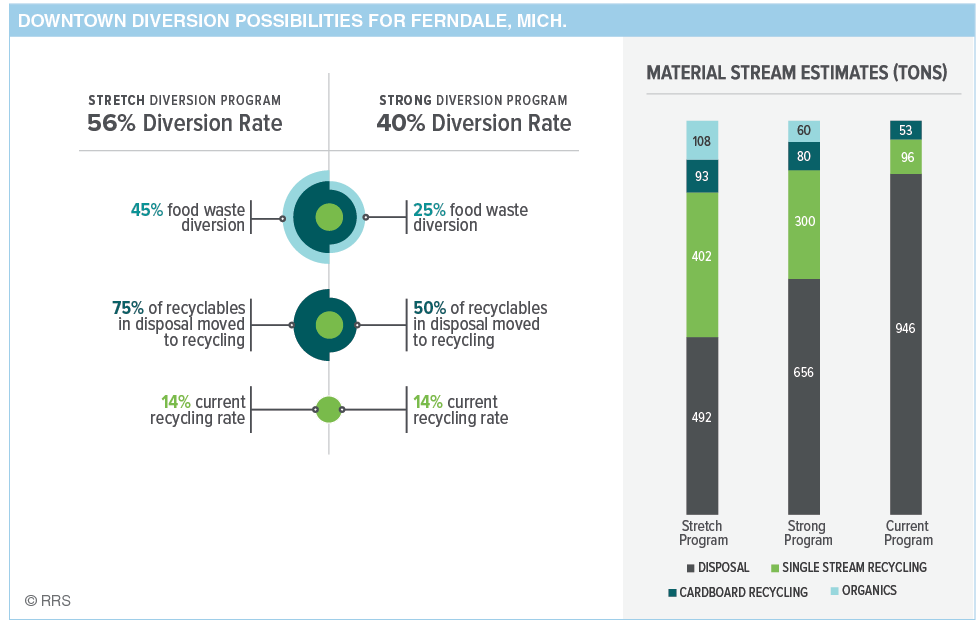Cities with thriving downtowns face multiple challenges regarding solid waste management, including space constraints, varying frequency of service needs, data inconsistencies, and complications in incorporating recycling collection. Through the development of a waste reduction and recycling master plan, the city of Ferndale, Mich. sought to explore potential opportunities to ensure waste needs are met and diversion programs thrive in its central business district (CBD).
Ferndale is a city in Michigan’s Oakland County and has an area of 2 square miles just north of Detroit. As of the 2010 census, the city population was 19,900. Ferndale is well known in the Detroit area for its LGBT population and progressive policies.
In 2019, Ferndale’s CBD had 185 businesses with 1,051 employees. Like many communities, Ferndale does not have perfect information on the weights or volumes of garbage, recycling, fats oils and greases (FOG), and organics generated by downtown businesses. Challenges with obtaining specific CBD data include lack of hauler reporting and commingling of collected CBD material with residential streams.
However, it was estimated that CBD generators sent 946 tons to landfills and are estimated to have recycled 96 tons via single-stream collection and 53 tons of cardboard for an overall diversion rate of 14 percent. To understand how Ferndale could increase the CBD diversion rate, the RRS team examined the estimated composition of the waste stream for each commercial sector.
To aid Ferndale leaders in future planning, the RRS team built a model using information on downtown business material generation from a 2014 study conducted by the California Department of Resources Recycling and Recovery (CalRecycle). The model was then validated with available data on waste, recycling and FOG data the RRS team received.
The RRS model includes three program scenarios: “business as usual” diversion (14 percent), strong diversion (40 percent), and stretch diversion (56 percent). These scenarios can help Ferndale explore what new infrastructure is required to capture additional recycling and organics.
Moving Ferndale’s CBD from the baseline to a strong diversion program would require consistent and regular outreach and education to all businesses as well as increased recycling capacity. Implementing these steps could decrease downtown Ferndale’s disposed tons from 946 to 656 annually. With additional measures – such as financial incentives for businesses to recycle right, reduce waste to landfill, and implement organics diversion programs – Ferndale could cut disposed tons in half.
The city of Ferndale adopted the plan in 2020 and has budgeted funds to implement core elements of the plan.

This month’s Data Corner was produced by RRS. Learn more at recycle.com.
This article appeared in the December 2020 issue of Resource Recycling. Subscribe today for access to all print content.

